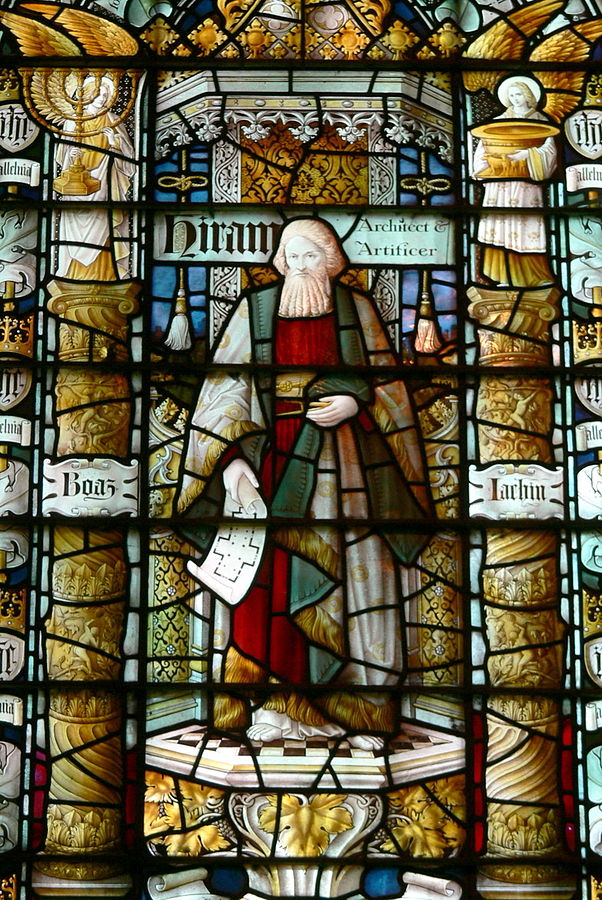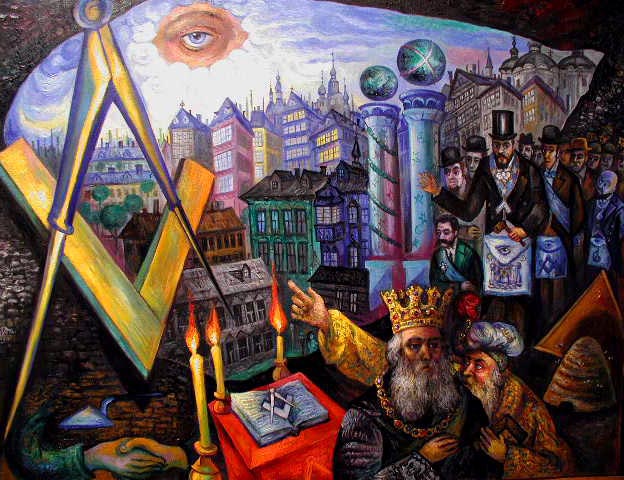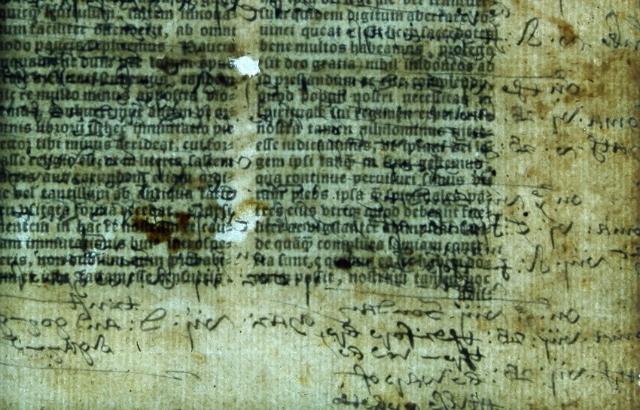In my research into the Biblical Curse of Cain and history of the Masonic fraternity, I found that the oldest writing ever discovered is a curse written on the stone Sarcophagus of the Phoenician King Ahiram. Many biblical scholars and researchers such as myself have suggested a possible connection to who is also known in both Freemasonic and biblical history as King Hiram.
Ahirom, Ahiram, Amram, and Hiram are alternative spellings of the same name.

He was a ruler of the ancient city of Byblos (Jubal/ Jubayl / Jbeil) which is the same city where the first writing was discovered and also where the Holy Bible is said to have originated. According to the writer Philo of Byblos (quoting Sanchuniathon, and quoted in Eusebius), Byblos is also considered as the world’s “oldest continuously inhabited city.”
The Greeks had given the name of the lands they ruled as “Phoenicia,” and they called the city “Byblos” by the name “Papyrus” because this city was important in the papyrus trade. The Phoenician city, known to the Greeks as Býblos (Βύβλος) and to the Romans as Byblus, was important for their import of papyrus from Egypt.
The curse is written in ancient Phoenician writing with 22 letters, the same number as the Hebrew which also happens to be the world’s first alphabet. The scribes of Byblos were said to have developed this writing which became the precursor of all modern alphabets of Babel and all languages that are spoken today.
This is very important because not only was the world’s oldest curse discovered but it was also the world’s oldest writing in one of the world’s oldest cities where the bible had originated.
The inscription reads;
“A coffin made it [It]tobaal, son of Ahirom, king of Byblos, for Ahirom, his father, lo, thus he put him in seclusion. Now, if a king among kings and a governor among governors and a commander of an army should come up against Byblos; and when he then uncovers this coffin – (then:) may strip off the scepter of his judiciary, may be overturned the throne of his kingdom, and peace and quiet may flee from Byblos.
And as for him, one should cancel his registration concerning the libation tube of the memorial sacrifice.”

Another interesting Freemasonic fact is that the first priest offering tribute to the King appears to be holding a Masonic Square in his right hand. They also look very similar to the Egyptian priesthood proving further connections to Egypt which I have written about many times before.
The Sarcophagus of Ahiram was discovered in 1923 during an excavation in Byblos, which was led by the French archaeologist Pierre Montet. A total of nine tombs belonging to the Phoenician kings were discovered at Byblos.
Hiram’s tomb was discovered after it became exposed from heavy rains that caused the collapse of parts of a hill. The tombs were cut directly into the rock, and it was in tomb V that his sarcophagus, which is made of limestone, was found.
In my many previous articles, I have put forth research showing that Ahiram is also known biblically and Masonically as King Hiram who was the Phoenician King of Tyre on the Holy Island of Crete during the reigns of Egyptian Kings, David and Solomon who I have also connected to Ramesses II and III.
Physical evidence of these facts was found in Ahiram’s tomb when during the excavation some objects bearing the cartouche of Ramesses II (XIII century), were discovered in the burial chamber next to the sarcophagus.
It is said that King Ahiram was succeeded by his son Ithobaal I (Latin Ithobalus, Hebrew Ethbaal) (reigned 591–573 BCE) who is the first to be explicitly entitled King of Byblos. From the inscriptions on the lid of the sarcophagus, it seems clear that the one in charge of the ceremony was the king’s son.
This king is said by religious scholars to be identified with specifically Ithobaal III who according to the list of kings of Tyre of Josephus was reigning contemporary with Ezekiel at the time of the first fall of Jerusalem.
He was said to the father of the Jezebel and is mentioned in the First Book of Kings as the king of Sidonians.
Today, the Sarcophagus of King Ahiram is kept in the National Museum of Beirut in Lebanon.

Moe is the founder of GnosticWarrior.com. He is a father, husband, author, martial arts black belt, and an expert in Gnosticism, the occult, and esotericism.









Wow, recently I have woken up during the night to see writings all over my walls. I could not make it out but finally took a picture. I also see an outline of Pres Trump’s face in the room with another being’s full on face. My Grandmother had a French Room in her home we were not allowed to go into without permission and we were told about some Royal bloodline. She was born on Easter. Her nickname was Muzzy. We were told never to ask her for anything as she had been through a lot. I feel some connection to her as my middle name is her first name and I wear her signet ring from her first love who died from influenza from WW I. She is very special. 🌹